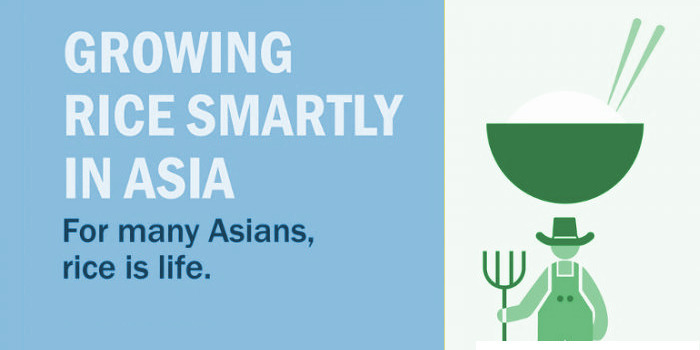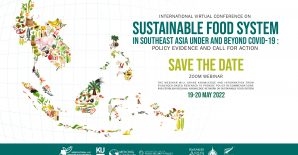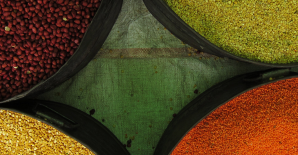A new regional strategy calls for modernization and transformation of the rice sector in Asia
Asian countries are undergoing structural transformation; the economy is shifting from agriculture to non-agriculture sectors, and laborers are migrating from rural areas to cities. Asia’s economic future depends on its ability to successfully fast-track structural transformation through policy that facilitates job creation and opens up new sectors and markets, according to Asian Development Bank. What does this mean for agriculture? As the sector with the lowest productivity, that still engages over 43 percent of Asia’s total employment, agriculture is also likely to undergo a transformation to a system that requires fewer farmers and greater mechanization, increased yields per unit area, larger farm sizes, , and improved value chain integration, among others.
For many Asians, rice is life and the staple that cannot be ignored in Asia’s agriculture landscape. Asia produces and consumes 90 percent of the world’s rice. Around 140 million people farm rice as their main source of income, and millions of rural poor are hired on rice farm as additional labors. As the main staple of food, rice expenditures make up a fifth of rural households’ total expenses in Asia.
Given the changing Asian economy and the importance of rice in the region, Asia and the Pacific countries worked together with the Food and Agriculture Organization of the United Nations (FAO) to develop a new regional rice strategy to facilitate agricultural transformation and ensure food security in the region. During the past decade, rice productivity growth has been slower than population growth, partly due to the slowdown in agricultural R&D investments during the 1990s to 2000s prior to the world food price crisis. The new strategy aims to provide evidence-based guidelines on how to modernize and transform the rice sector under various challenges.
The strategy sets 6 key objectives that cover a wide range of development aspects. The first is to increase productivity, nutritional value and sustainability of rice systems through rice production with an integrated systems such as rice-fish, rice–legume, or rice-livestock. The region should also consider expanding the production of improved rice varieties with enhanced micronutrients such as iron, zinc, or vitamin A to reduce malnutrition among the poor.
Mitigating and adopting to climate change plays a key role in the regional strategy. The cyclical weather pattern El Nino, brought drought to Southeast Asia and India sparked a surge in food prices (including rice) in 2007 and again in 2009, and is likely to again this year, according to the UN weather agency. Greater market integration and regional rice reserves may offer solutions to regional rice shortages and to mitigate high prices. In addition, improved technologies such as “climate change-ready” rice developed by the International Rice Research Institute (IRRI) in the Philippines can help reduce the amount of damage due to flooding, drought, and high salinity. ;
The strategy also finds the need to: enhance value chains and reduce post-harvest losses; conserve the environment and heritage; promote fair and efficient markets and trade; and improve organization of production, and empower youth and women. FAO urges governments to incorporate the latest research and development results into their rice policies and promote capacity building in adopting climate-resilient varieties/practices.





Leave a Reply